Abstract
Personal Electronic Health Records (EHR) have recently been published as one means to support patient empowerment and patient control over their personal health record. The functionality of such an EHR may vary from a simple web-based interface for interactive data entry and data review up to a much more powerful system additionally supporting electronic data/document communication between clinical information systems of primary care practitioners or hospitals and even reminder based support for the empowered citizen, to actively take care of his health, based on relevant disease management programs. Since storage and communication of data in an EHR comprises sensible personal health data, each of those functions need specific security and access management requirements to be considered and implemented. In this article the most critical requirements for these aspects will be classified and respective mechanisms to provide secure data storage and communication as well as flexible access management functions will be presented.
Full text
PDF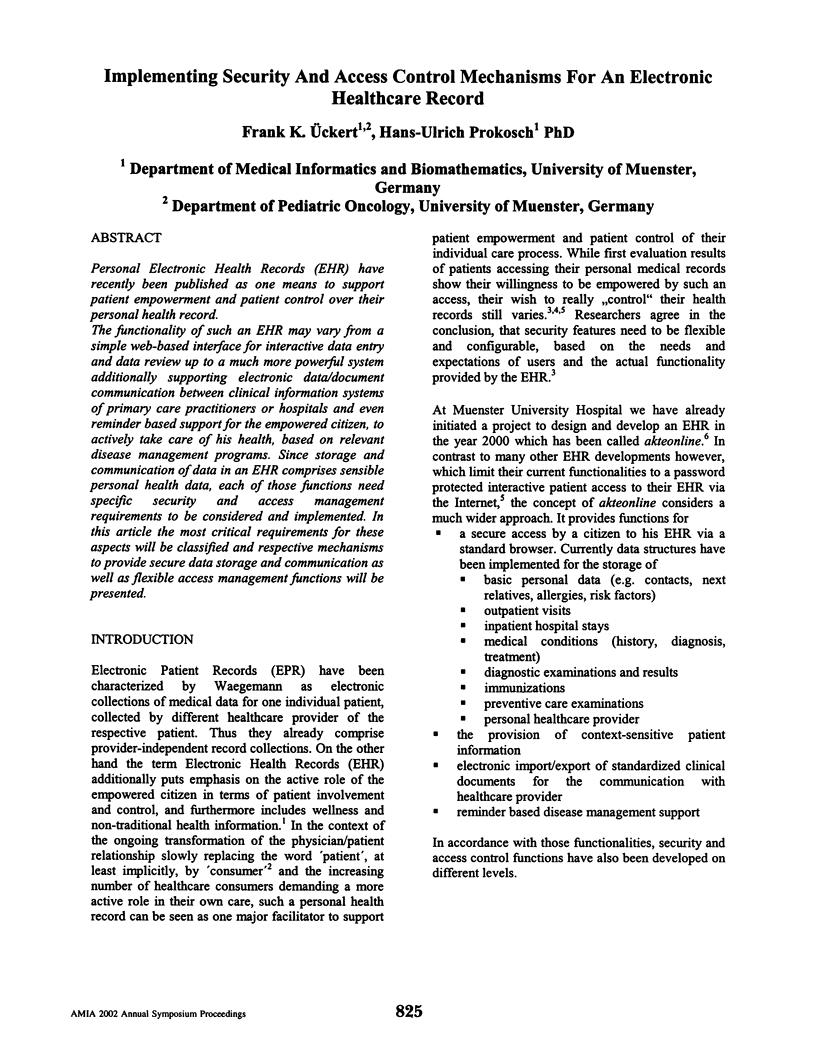
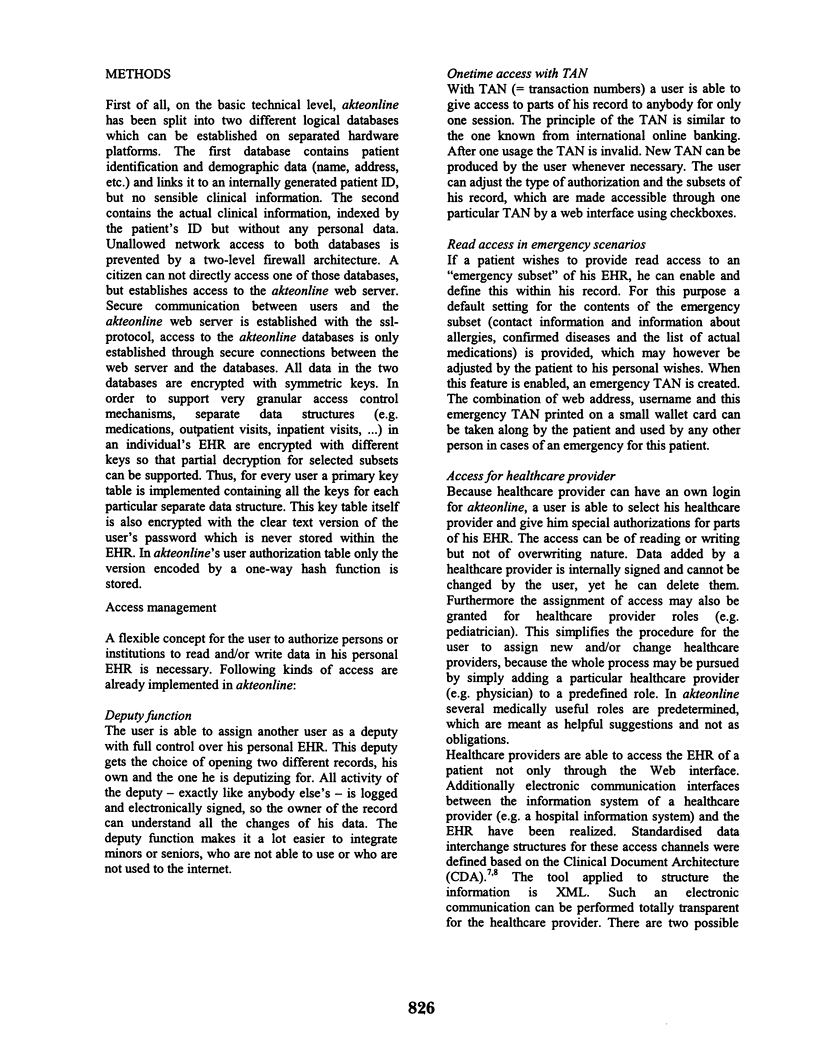
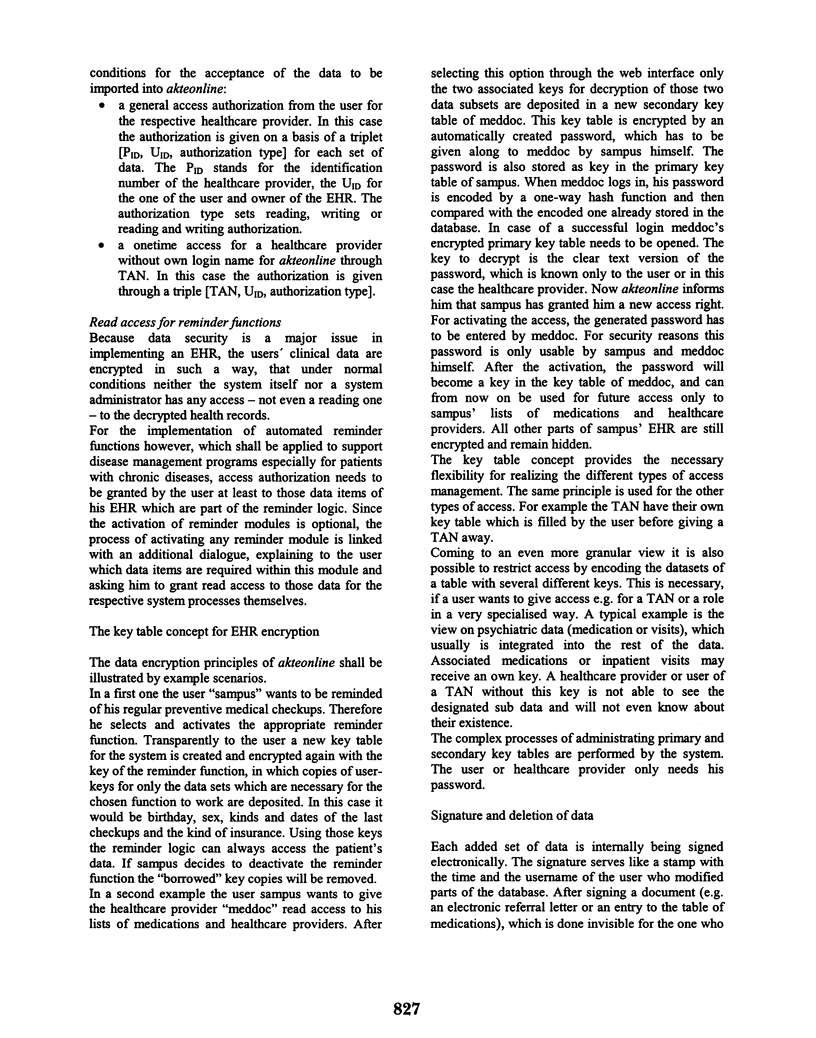
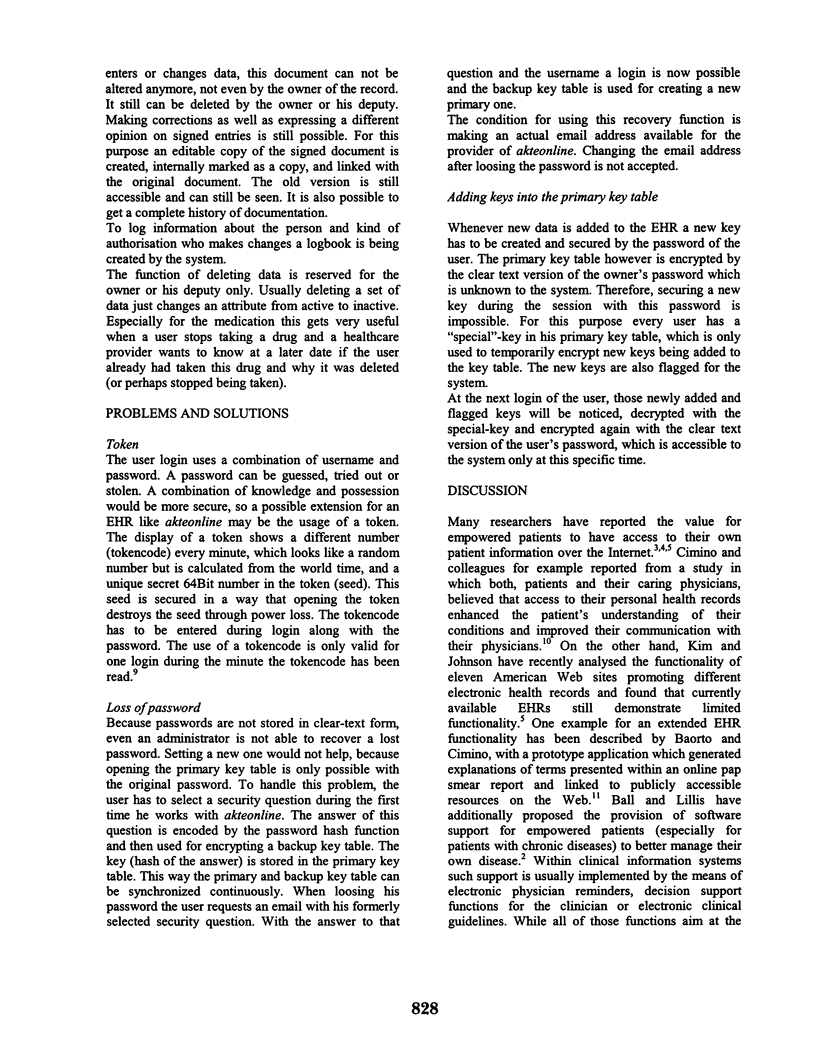
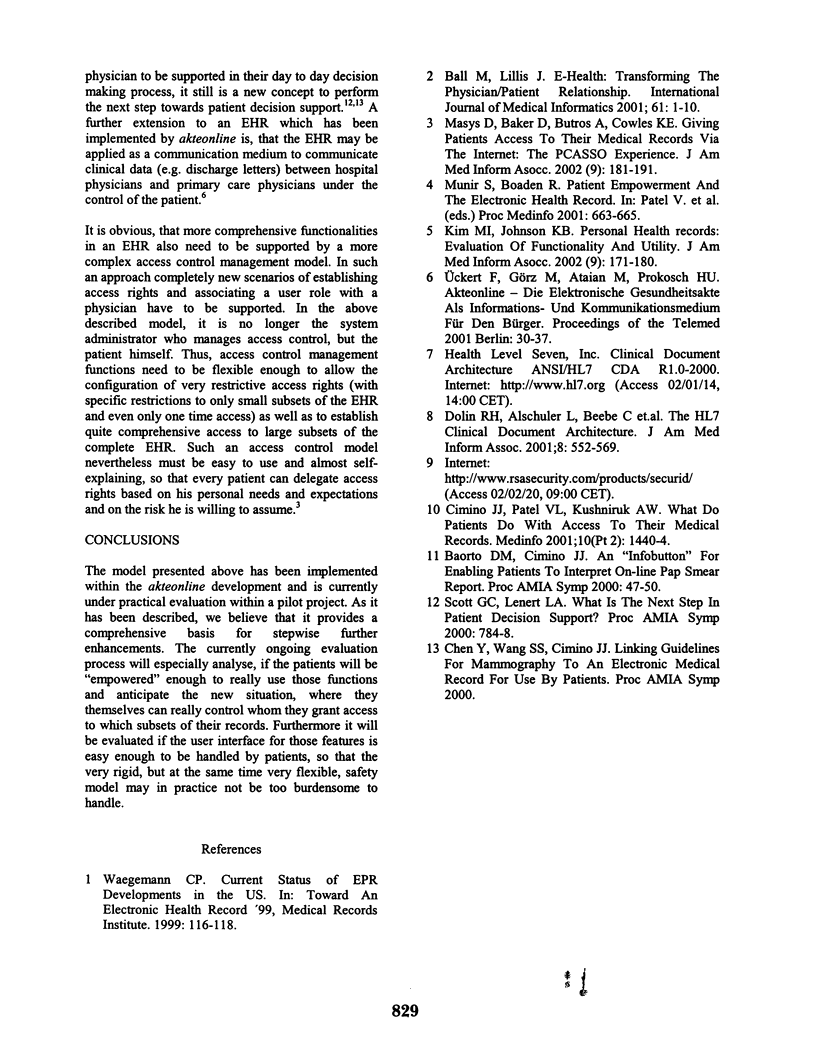
Selected References
These references are in PubMed. This may not be the complete list of references from this article.
- Ball M. J., Lillis J. E-health: transforming the physician/patient relationship. Int J Med Inform. 2001 Apr;61(1):1–10. doi: 10.1016/s1386-5056(00)00130-1. [DOI] [PubMed] [Google Scholar]
- Baorto D. M., Cimino J. J. An "infobutton" for enabling patients to interpret on-line Pap smear reports. Proc AMIA Symp. 2000:47–50. [PMC free article] [PubMed] [Google Scholar]
- Cimino J. J., Patel V. L., Kushniruk A. W. What do patients do with access to their medical records? Stud Health Technol Inform. 2001;84(Pt 2):1440–1444. [PubMed] [Google Scholar]
- Dolin R. H., Alschuler L., Beebe C., Biron P. V., Boyer S. L., Essin D., Kimber E., Lincoln T., Mattison J. E. The HL7 Clinical Document Architecture. J Am Med Inform Assoc. 2001 Nov-Dec;8(6):552–569. doi: 10.1136/jamia.2001.0080552. [DOI] [PMC free article] [PubMed] [Google Scholar]
- Kim Matthew I., Johnson Kevin B. Personal health records: evaluation of functionality and utility. J Am Med Inform Assoc. 2002 Mar-Apr;9(2):171–180. doi: 10.1197/jamia.M0978. [DOI] [PMC free article] [PubMed] [Google Scholar]
- Masys Daniel, Baker Dixie, Butros Amy, Cowles Kevin E. Giving patients access to their medical records via the internet: the PCASSO experience. J Am Med Inform Assoc. 2002 Mar-Apr;9(2):181–191. doi: 10.1197/jamia.M1005. [DOI] [PMC free article] [PubMed] [Google Scholar]
- Munir S., Boaden R. Patient empowerment and the electronic health record. Stud Health Technol Inform. 2001;84(Pt 1):663–665. [PubMed] [Google Scholar]
- Scott G. C., Lenert L. A. What is the next step in patient decision support? Proc AMIA Symp. 2000:784–788. [PMC free article] [PubMed] [Google Scholar]


